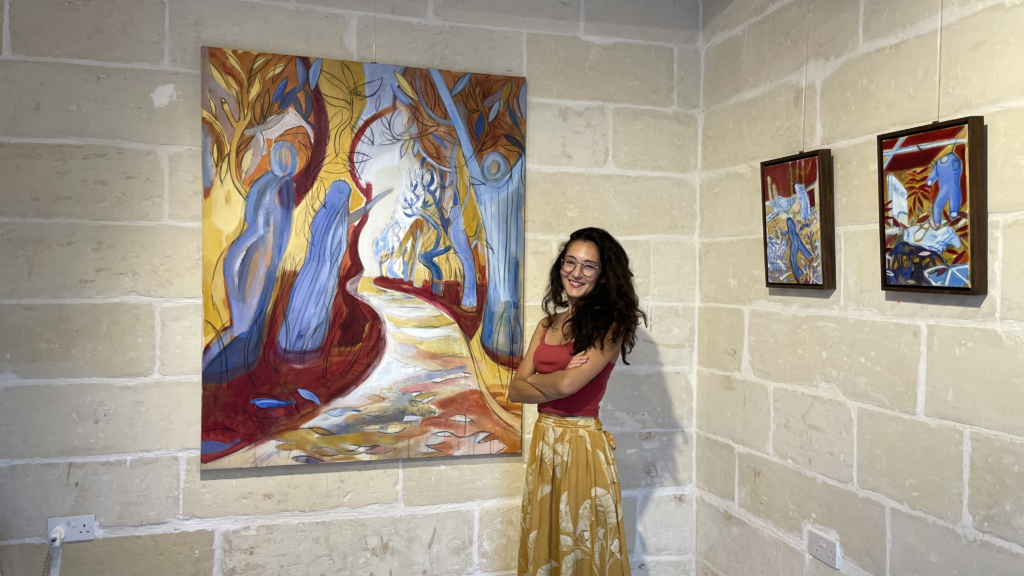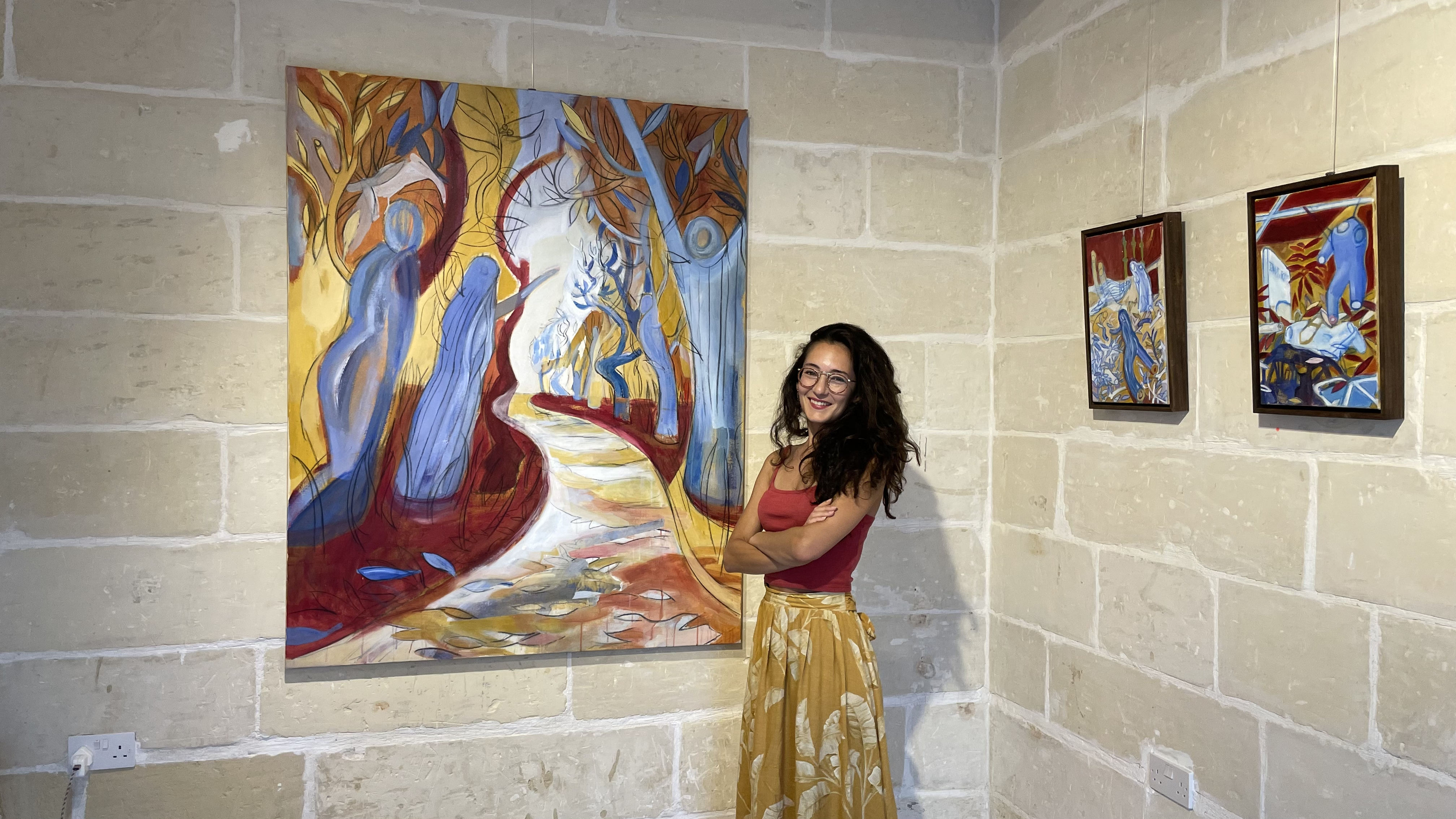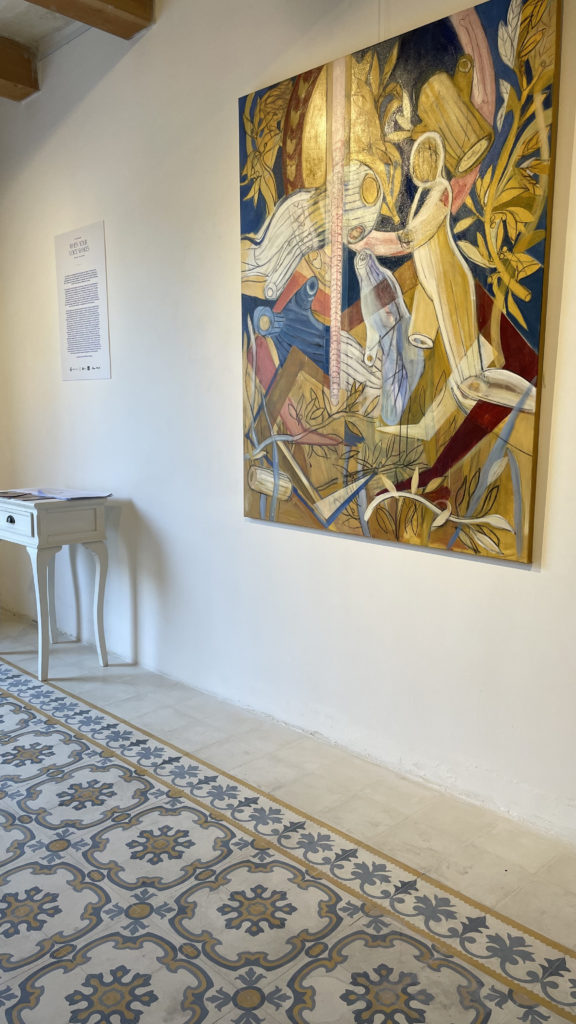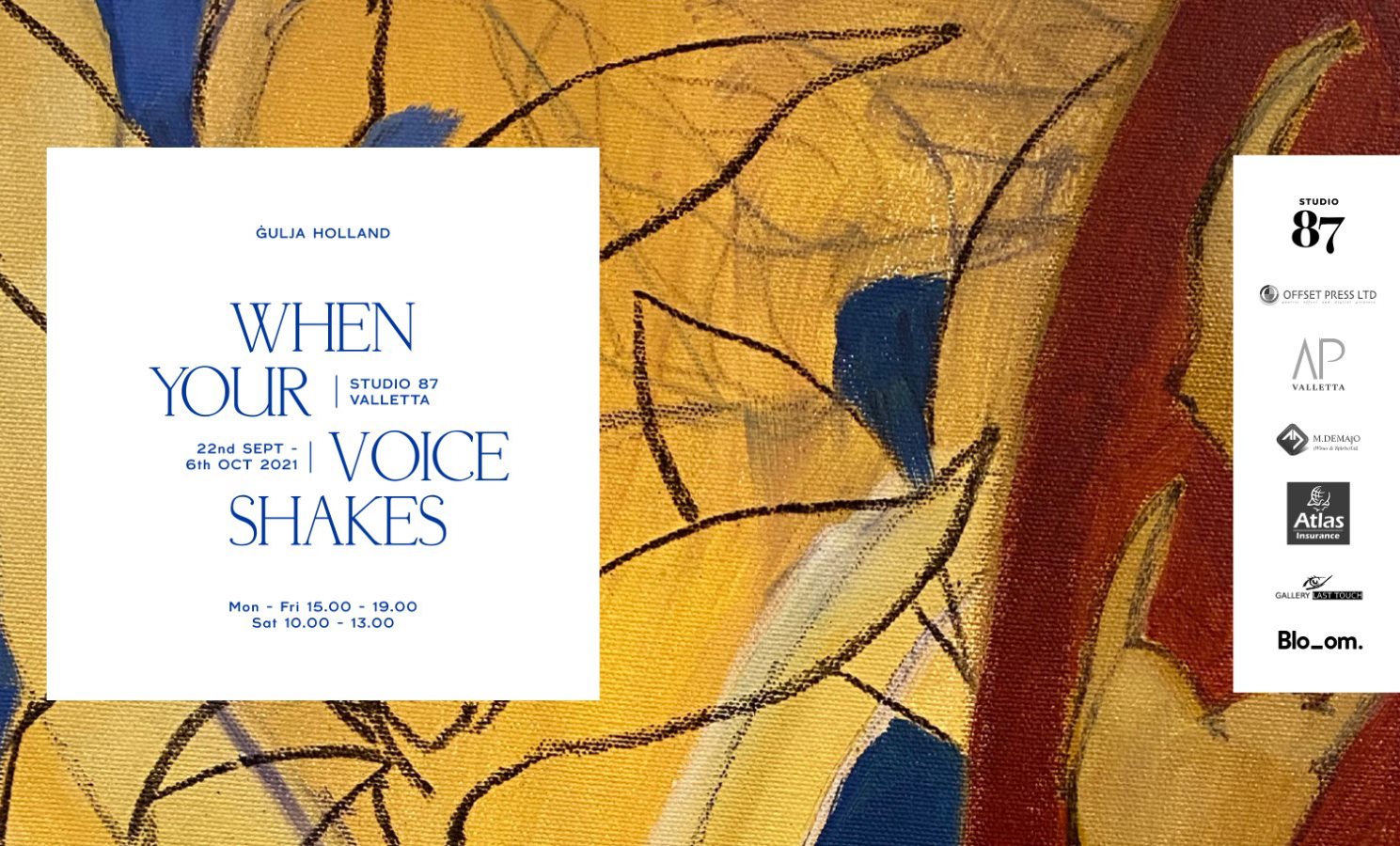In conversation with Ġulja Holland about her ongoing exhibition at Studio 87


My two year MA began shortly before the pandemic and ended this July, with covid regulations heavily impacting our real-life interactions and studio time at college throughout. Still- all in all, it’s been an incredible and transformative experience. I’ve made some great friendships with like-minded artists and have managed to carve out a practice that I am really proud to push forward with.

The title references a quote by the American activist Maggie Kuhn, whose words were spray-painted in 2019 on a wall in Msida, above the date of October 16, 2017, the day when investigative journalist Daphne Caruana Galizia was brutally assassinated. The phrase is particularly timely in the face of worsening political and environmental crises here in Malta. By way of this exhibition, I wanted to reflect on the interconnectivity between these two predicaments and to challenge the true cost of ‘progress’.
“Leave safety behind. Put your body on the line. Stand before the people you fear and speak your mind--even if your voice shakes. When you least expect it, someone may actually listen to what you have to say. Well-aimed slingshots can topple giants.”
In my previous solo exhibition, I focused on the theme of environmental crises on a global scale, but as the crises worsened in Malta I felt compelled to hone in on my scope. Shortly before beginning the series of works I had visited an exhibition by one of my favourite artists, William Blake at the Tate Britain. I came across a quote by Blake which inspired me to employ the motif of the tree to represent our country’s heritage: “The tree which moves some to tears of joy is in the eyes of others only a green thing which stands in the way… As a man is, so he sees.”
My artistic scope was also influenced by Anselm Kiefer and Philip Guston. Both artists produced some of the most moving paintings that deal with the tension between private conscience and public responsibility. In terms of style, their influence has encouraged a more symbolic and surreal approach.

Yes, my palette is symbolic of the colour of Malta. When I think of my country’s coastline I think of a saturated azure sky over a honey-coloured yellow stone. But the red against the blue is also representative of the polarized political landscape. I’ve given a lot of consideration to my painting titles amongst which ‘Qattluha’, ‘When your voice shakes’, ‘Dubai’, ‘Happy people’ ‘1%’ all reference the political component.
Compositionally, my paintings are very much informed by the internet sourced imagery of the hundreds of trees that have faced the chop in the last half-decade. One such painting that depicted a chopped tree is euphemistically titled ‘The pruning’. Another symbolizes the trees which shall be uprooted in the name of the Central link project.
An all-female group exhibition showing at Desko under the curation of Nicol Parnis beginning on the 27th of this month. Come!

What have local artists been working on recently? What have they got in store for you over the coming weeks and months? We’ve put together…
A whole new year, with all new art exhibitions. Find out what local Artists, Galleries, Museums and organisations have been working on and discover what…
A whole new year , with all new art exhibitions. Find out what local Artists, Galleries, Museums and organisations have been working on and discover…
What have local artists been working on recently? What have they got in store for you over the coming weeks and months? We’ve put together…
Tell us about how your practise started? I unknowingly started book-collecting ever since I was young. I was particularly drawn to children’s fairytale books and…
| Cookie | Duration | Description |
|---|---|---|
| cookielawinfo-checbox-analytics | 11 months | This cookie is set by GDPR Cookie Consent plugin. The cookie is used to store the user consent for the cookies in the category "Analytics". |
| cookielawinfo-checbox-functional | 11 months | The cookie is set by GDPR cookie consent to record the user consent for the cookies in the category "Functional". |
| cookielawinfo-checbox-others | 11 months | This cookie is set by GDPR Cookie Consent plugin. The cookie is used to store the user consent for the cookies in the category "Other. |
| cookielawinfo-checkbox-necessary | 11 months | This cookie is set by GDPR Cookie Consent plugin. The cookies is used to store the user consent for the cookies in the category "Necessary". |
| cookielawinfo-checkbox-performance | 11 months | This cookie is set by GDPR Cookie Consent plugin. The cookie is used to store the user consent for the cookies in the category "Performance". |
| viewed_cookie_policy | 11 months | The cookie is set by the GDPR Cookie Consent plugin and is used to store whether or not user has consented to the use of cookies. It does not store any personal data. |
Responses